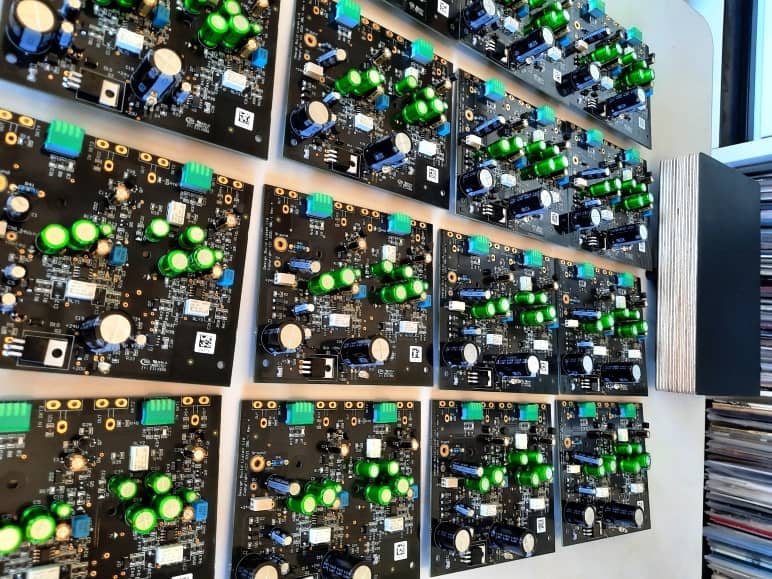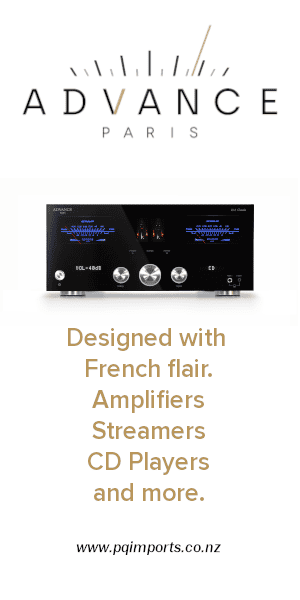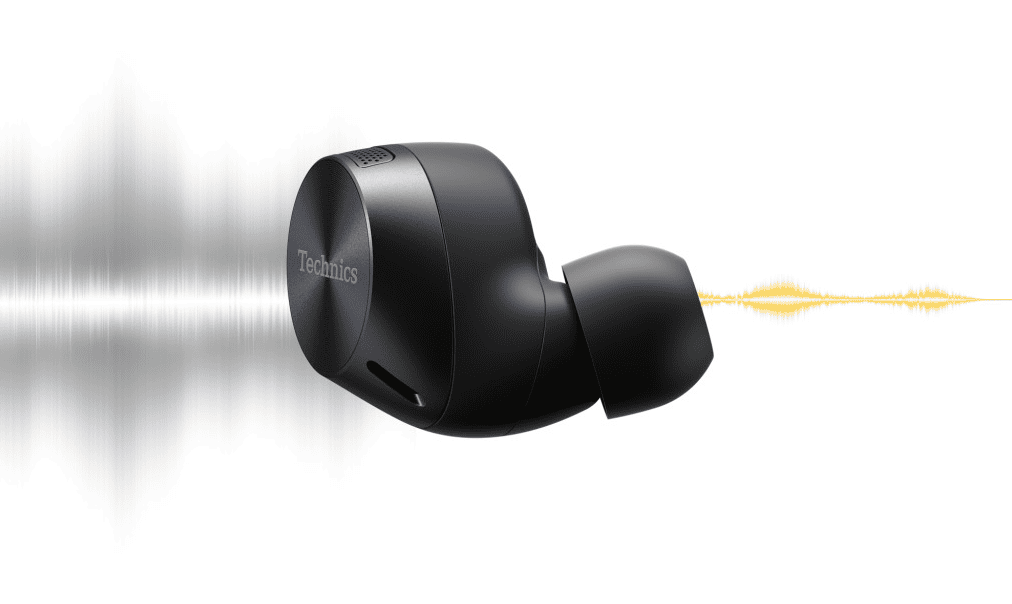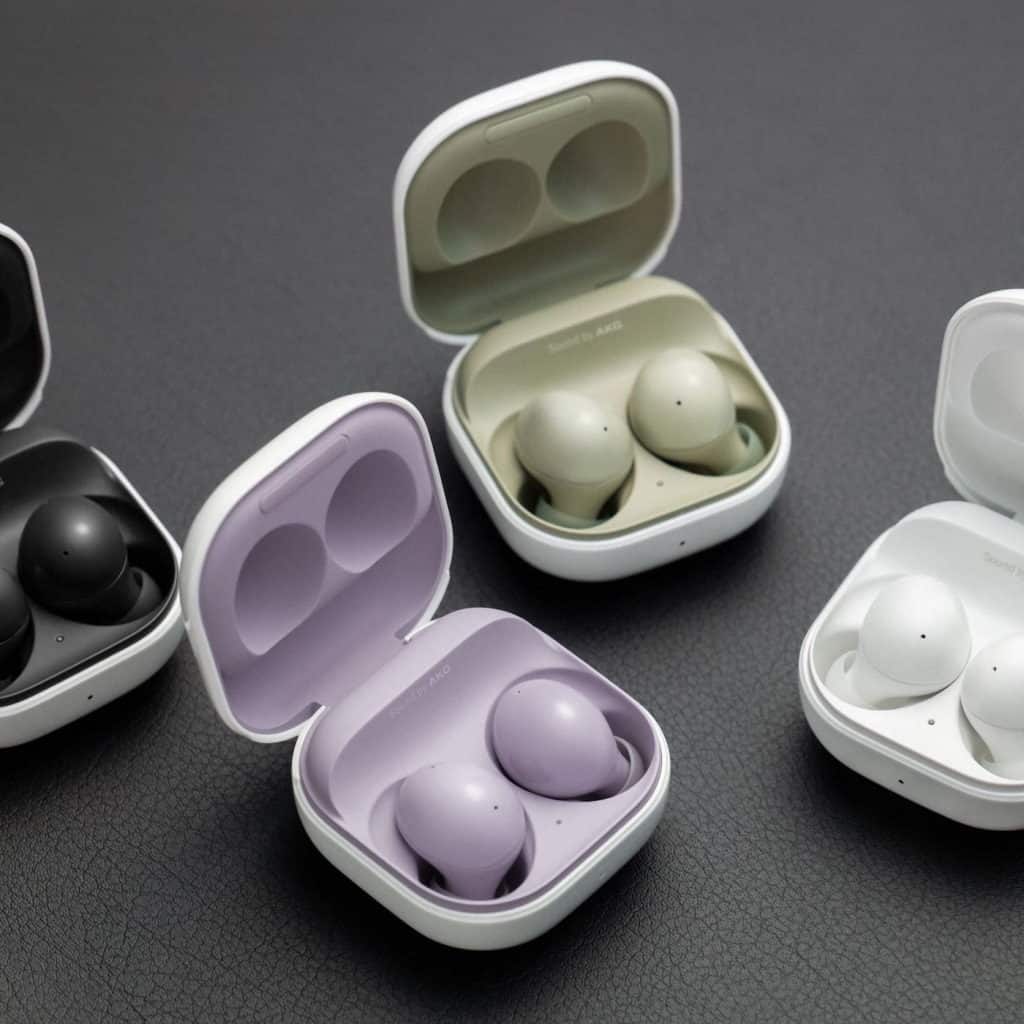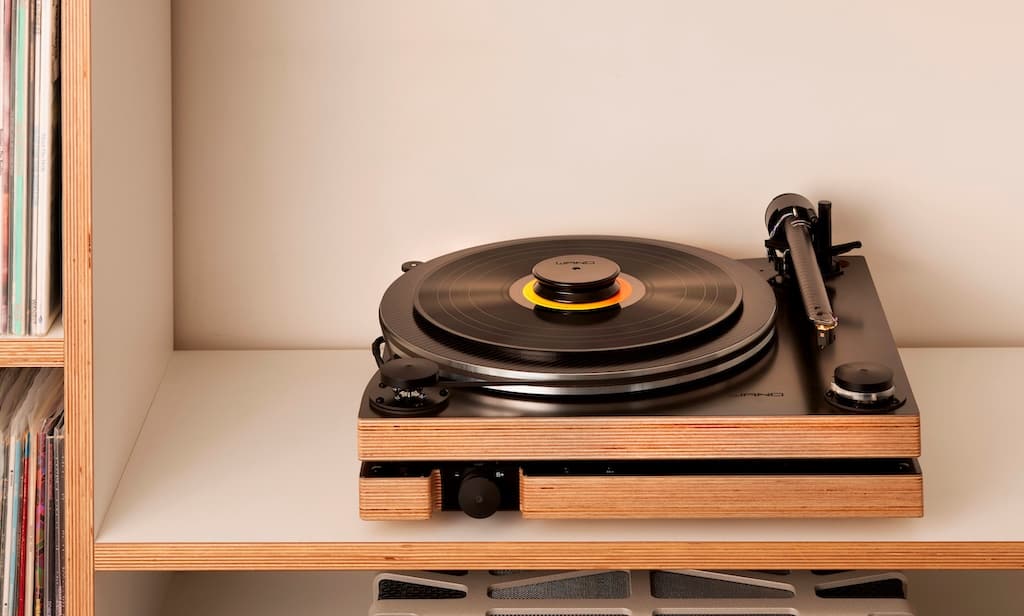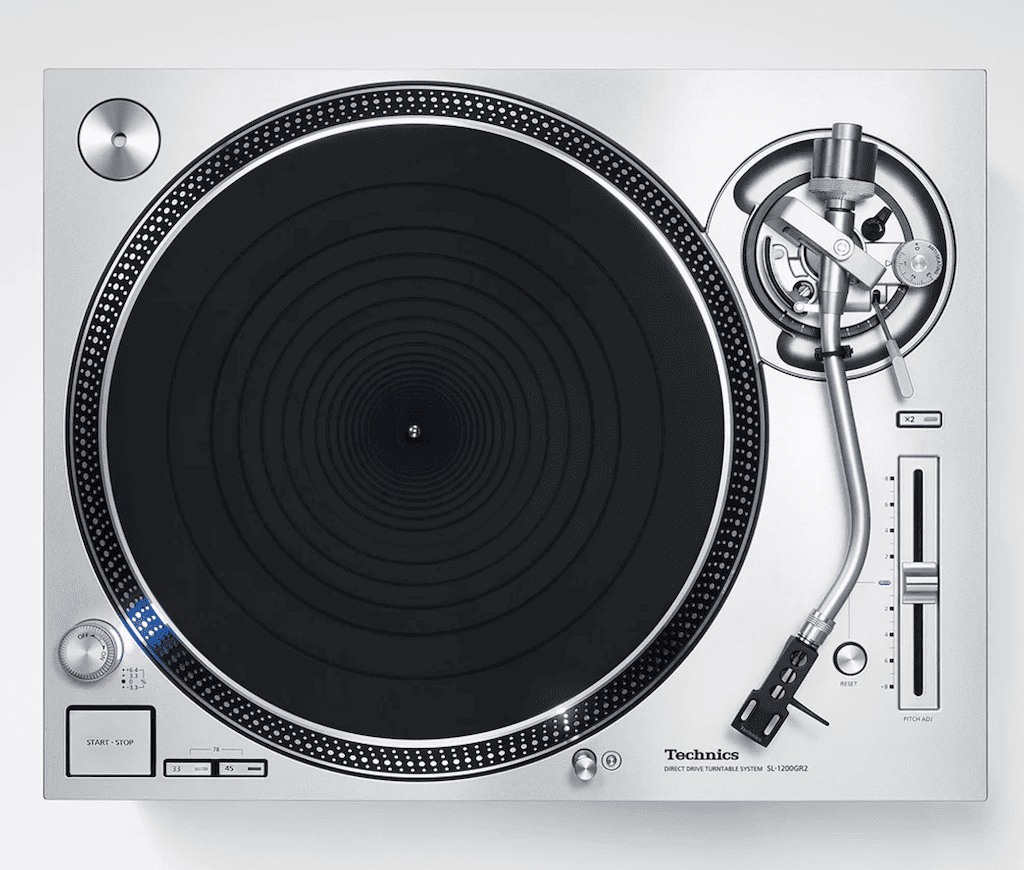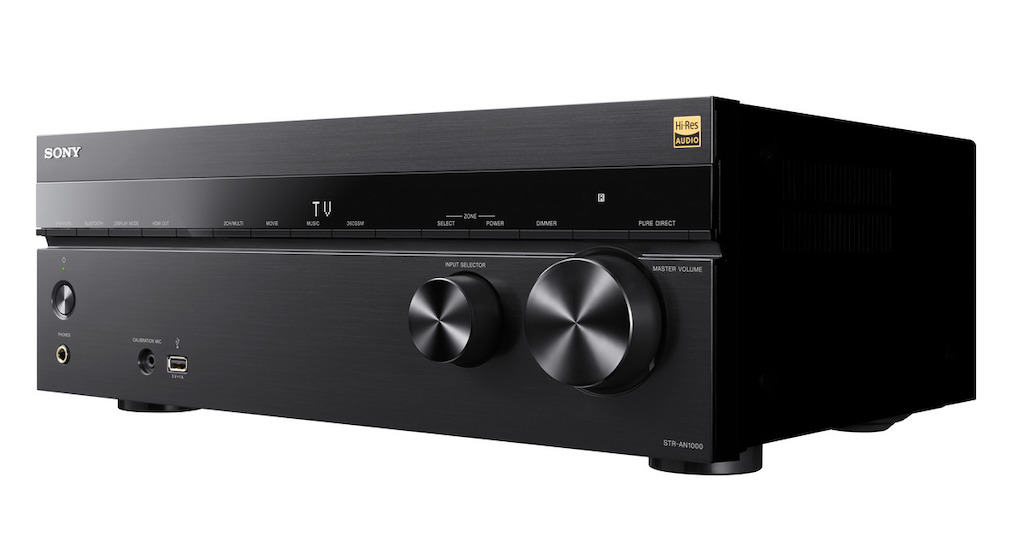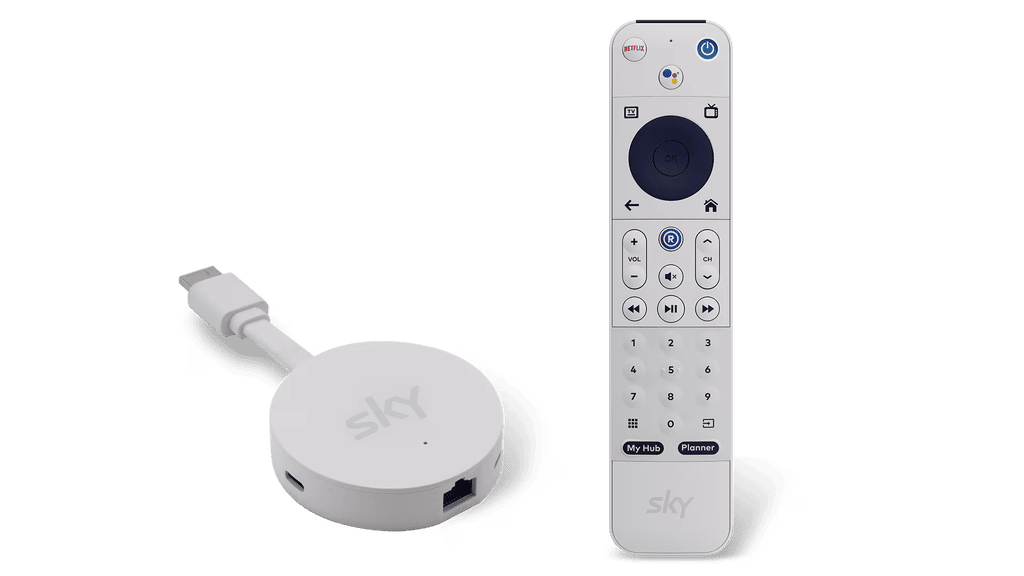Summary
The Wand EQ MM/MC Phonostage REVIEW
Designed by the late Kiwi hi-fi legend Gary Morrison, The Wand EQ is given a detailed appraisal by Witchdoctor stereo guru ANDREW BAKER.
$1400 with 14/4 Turntable/$1650 separately
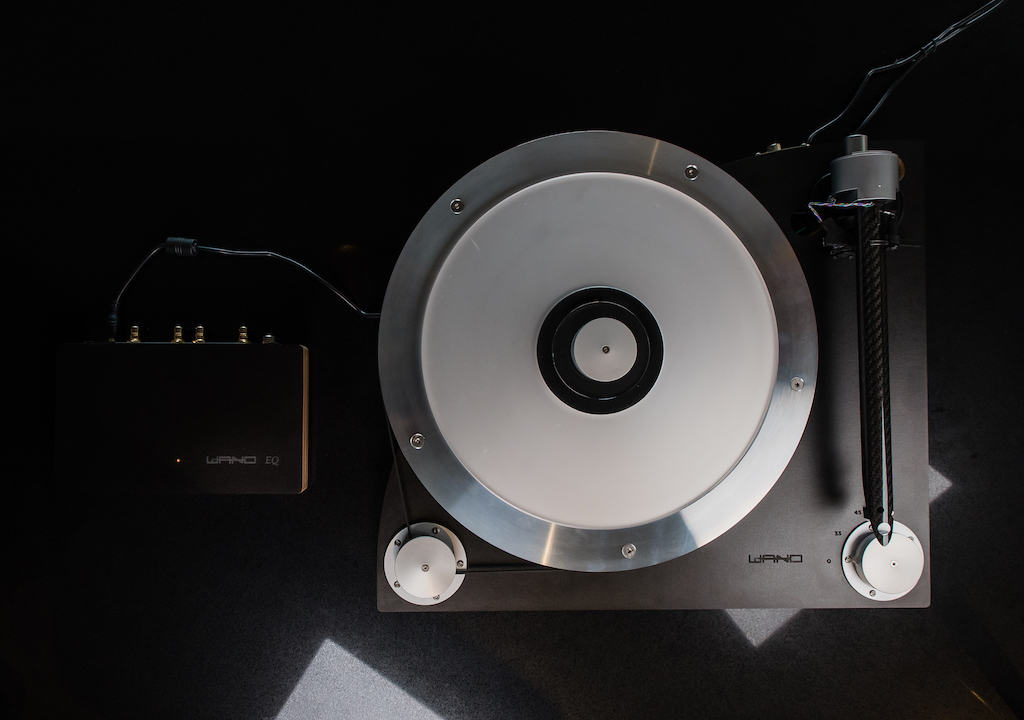 Typically, a good quality turntable and cartridge are only going to perform at their best when played through a really decent phonostage (the rest of the system notwithstanding). A great many integrated amplifiers and pre-amplifiers come with built-in phonostages which range in sound quality from ‘token’ to ‘damn good’, with many of those that I’ve heard sitting somewhere around the middle.
Typically, a good quality turntable and cartridge are only going to perform at their best when played through a really decent phonostage (the rest of the system notwithstanding). A great many integrated amplifiers and pre-amplifiers come with built-in phonostages which range in sound quality from ‘token’ to ‘damn good’, with many of those that I’ve heard sitting somewhere around the middle.
Having a separate phonostage not only gives scope for easy future upgrades (cartridge, tonearm, turntable) but can also be useful for obtaining the all-important ‘system synergy’. And separates – not always of course – are more likely to have better, or at least easier, user-adjustability to allow experimentation with cartridge matching and personal sound preferences, beyond simple selection of ‘MM’ or ‘MC’.
The Wand EQ phonostage was designed in New Zealand by the late Gary Morrison, co-founder of Pure Audio and who had previously worked for Plinius. It was created especially for The Wand brand then voiced specifically for The Wand Tonearms and more or less individually handmade by Gary himself.
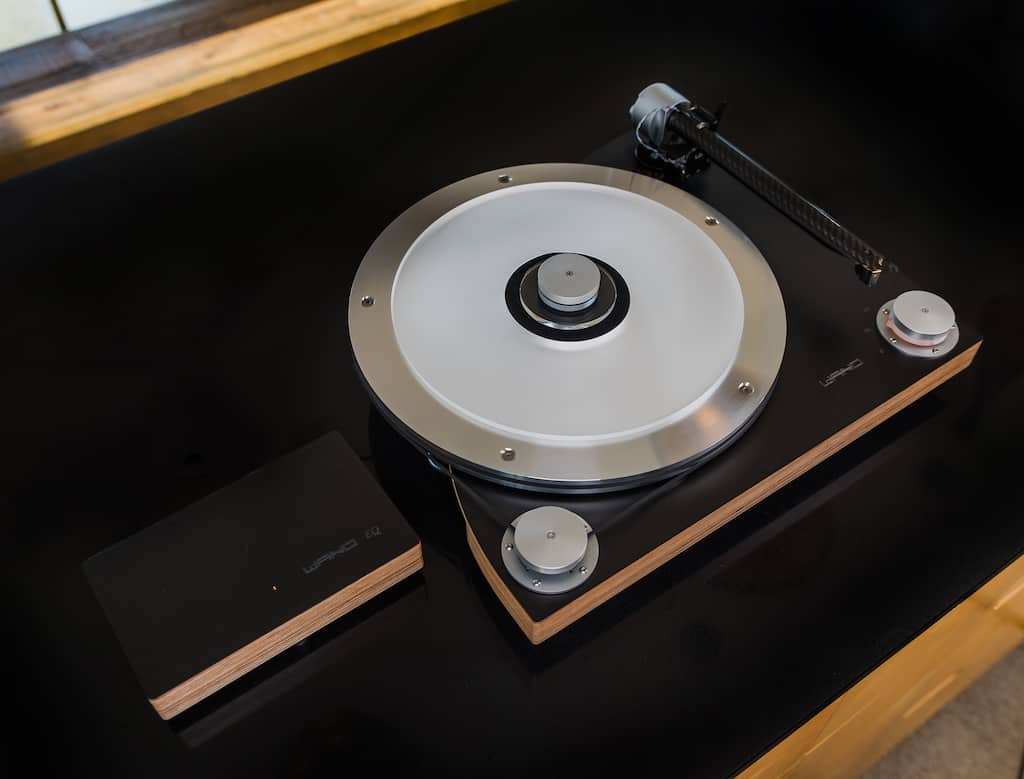 It’s a solid-state moving magnet and moving coil design, operating in pure Class A, and uses dual low noise J-FET inputs. Switches on the back are easily accessed, allowing users to adjust impedance and capacitance settings and to switch between MC and MM. Inputs and outputs are single-ended RCAs and the power supply is a lap-top style, similar to that of The Wand Turntable. Moving coil setting gives a gain of 62dB and moving magnet 40dB and the impedance choices are 82, 100, 475 and 47k Ohms. As it says in the User Manual, experiment until you find the sound you prefer; you can’t really do anything wrong. The capacitance, in some instances, can be switched to 220pF, but don’t be too bothered by this. Capacitance can sometimes cause a bit of confusion amongst turntable enthusiasts – myself included – but this is just for moving magnet cartridges and really just takes the bite out of any harsh treble that may exist.
It’s a solid-state moving magnet and moving coil design, operating in pure Class A, and uses dual low noise J-FET inputs. Switches on the back are easily accessed, allowing users to adjust impedance and capacitance settings and to switch between MC and MM. Inputs and outputs are single-ended RCAs and the power supply is a lap-top style, similar to that of The Wand Turntable. Moving coil setting gives a gain of 62dB and moving magnet 40dB and the impedance choices are 82, 100, 475 and 47k Ohms. As it says in the User Manual, experiment until you find the sound you prefer; you can’t really do anything wrong. The capacitance, in some instances, can be switched to 220pF, but don’t be too bothered by this. Capacitance can sometimes cause a bit of confusion amongst turntable enthusiasts – myself included – but this is just for moving magnet cartridges and really just takes the bite out of any harsh treble that may exist.
The output impedance of the EQ is 100 Ohms and the frequency response is stated as 20Hz to 20kHz.
There are two versions of the EQ available: one comes mountable to The Wand 14/4 Turntable and the other is a stand-alone unit. They come in the same layered plywood (polished with Manuka Beeswax, not varnished) as The 14/4 Turntable and even the matte-black top matches. The aforementioned back panel, along with the undercarriage, is black metal and the unit stands gracefully on three rubber feet. An amber LED glows softly from on top, without causing distraction or irritation.
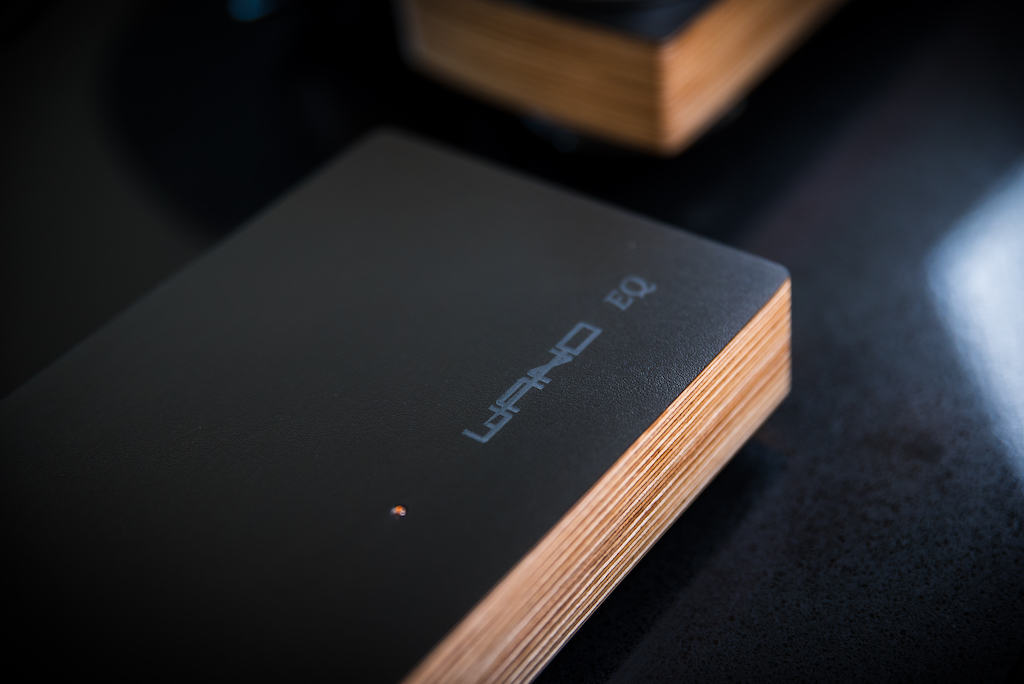 Since Gary Morrison’s untimely passing, Simon Brown of Design/Build/Listen – designer and producer of The Wand range – had to find a source to supply the PCBs himself, as well as the high-quality FET transistors and Nichicon output capacitors before being able to put the EQ back into production. Though no easy feat, Simon was successful and the EQ is again available to order. FETs are individually sorted using a tester made by Gary, with a lot being rejected. Once units are completed, Simon tests the voltage of each channel, runs the units for 24 hours and then gives them a listen, before giving them his final approval.
Since Gary Morrison’s untimely passing, Simon Brown of Design/Build/Listen – designer and producer of The Wand range – had to find a source to supply the PCBs himself, as well as the high-quality FET transistors and Nichicon output capacitors before being able to put the EQ back into production. Though no easy feat, Simon was successful and the EQ is again available to order. FETs are individually sorted using a tester made by Gary, with a lot being rejected. Once units are completed, Simon tests the voltage of each channel, runs the units for 24 hours and then gives them a listen, before giving them his final approval.
Set Up
For comparisons, I used my EAR 834P tube phonostage (an earlier version, not the current iteration – which I would love to review should anyone want to send me one) paired with my A23 SUT. I was also fortunate to be sent a Plinius ‘Jarrah’ phonostage to use for an extended period. The venerable Jarrah is something of a classic and also happens to be one of Gary Morrison’s earlier designs, dating back to, I believe, the mid-’90s. This was sent to me by a friend of Simon’s, for the purpose of historic context and making an interesting comparison between the two designs. Thanks Jon, much appreciated.
Cartridges used were my estimable EMT TSD15N and the comparatively brilliant Hana EL (and the Hana Umami Red, albeit briefly), all moving coils, on my Lenco L75 hybrid with 12-inch Apparition tonearm and, of course, on The Wand 14/4 Turntable. Simon had previously sent me a 12-inch Master arm with which to review the Hana Umami Red cartridge and that was again employed for this review.
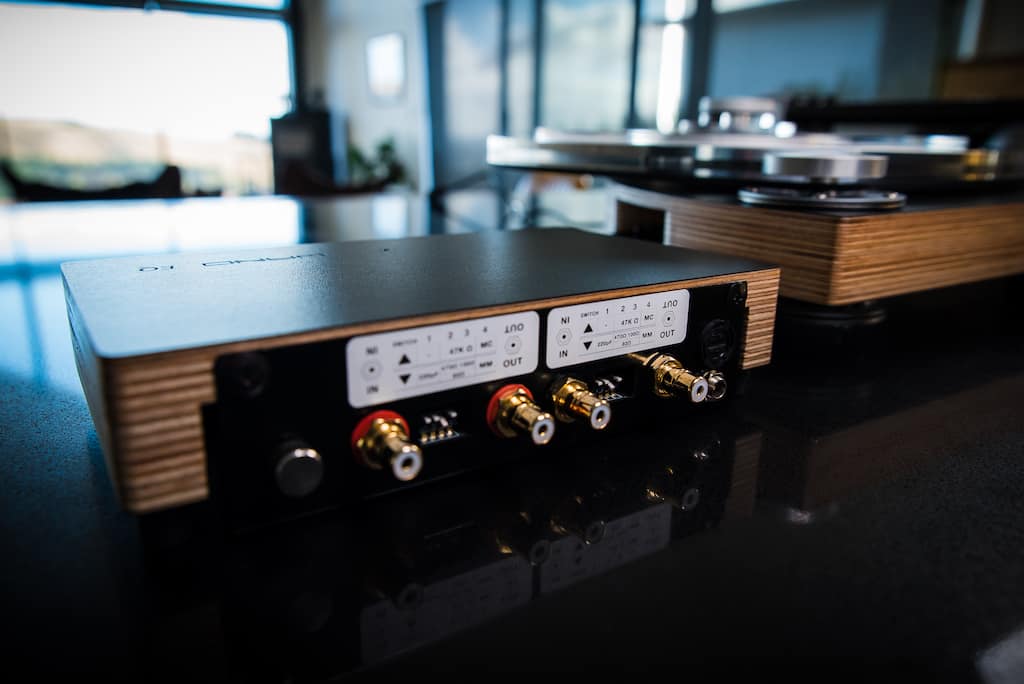 There’s just something almost indefinable about upgrading to a 12-inch arm, though most of the differences it provides tend to be subtle. Some say 12-inch arms can be a little slower in terms of transient response, but I find they tend to have a greater sense of ease all-round and marginally better low-end retrieval. There’s a theory that the slightly greater mass of the longer tonearm works better with the cartridge (again, some argue the opposite and of course it depends on the cartridge being used) and there’s the possibility the effects of tracking distortion are lessened, at the very least, by keeping the needle at the correct angle all the way across the record. Switching from the 10.4” Wand tonearm to the 12” Master arm isn’t really a great change in length visually (I think longer looks cooler, but also worth noting is that the 10.4” is a good in-between length anyway) but the bass did improve slightly, the soundstage seemed to widen and there was a bit more delicacy in the handling of details and micro-dynamics. One could argue that a subtle effect, when added to a bunch of other subtle changes, can add up to an overall not-so-subtle change.
There’s just something almost indefinable about upgrading to a 12-inch arm, though most of the differences it provides tend to be subtle. Some say 12-inch arms can be a little slower in terms of transient response, but I find they tend to have a greater sense of ease all-round and marginally better low-end retrieval. There’s a theory that the slightly greater mass of the longer tonearm works better with the cartridge (again, some argue the opposite and of course it depends on the cartridge being used) and there’s the possibility the effects of tracking distortion are lessened, at the very least, by keeping the needle at the correct angle all the way across the record. Switching from the 10.4” Wand tonearm to the 12” Master arm isn’t really a great change in length visually (I think longer looks cooler, but also worth noting is that the 10.4” is a good in-between length anyway) but the bass did improve slightly, the soundstage seemed to widen and there was a bit more delicacy in the handling of details and micro-dynamics. One could argue that a subtle effect, when added to a bunch of other subtle changes, can add up to an overall not-so-subtle change.
Don’t think of this review as merely a comparison between tubed and solid state hifi. A well-designed product sounds good because it is well designed, not because it does or doesn’t have tubes. Of course, we all have our preferences but preference doesn’t necessarily account for good design.
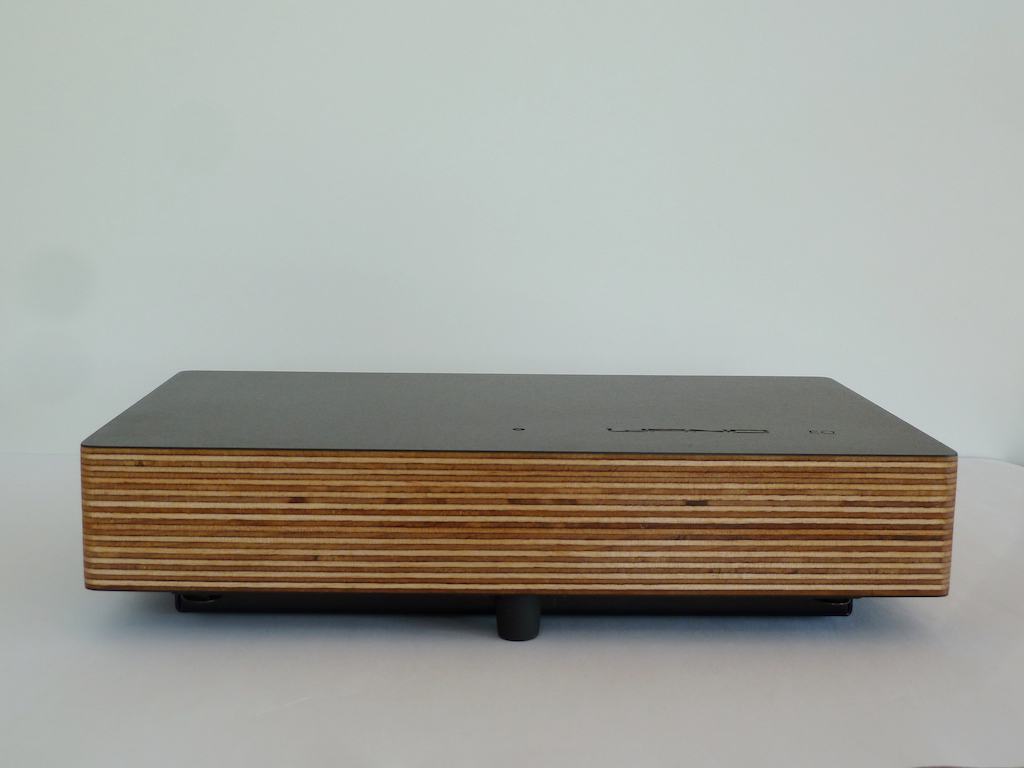 The EAR phonostage has no user adjustments for fine-tuning – unless you count tube-swapping – and has a SUT (step-up transformer) built into the moving coil stage. This allows the use of lower output MC cartridges, like my EMT and Hana but I have always considered it very underwhelming to listen to – at least with those cartridges. It’s adequate, does the job and I could live with it if forced to, but compared to using an outboard SUT like the A23 into the moving magnet stage or even a good MC stage, it just sounds bland. I’ve never been able to figure out quite why this is. The Wand EQ set to MC and adjusted via the gain settings to suit my taste, with no SUT in the chain, sounds very impressive indeed. It doesn’t quite produce the expanse and in-the-room-ness which the A23 SUT brings, yet still, it’s layered, lively, full of textures and rich in detail. Let’s just say, a SUT is a bonus if you have one, but personally, I wouldn’t go out of my way to get one if I had the EQ.
The EAR phonostage has no user adjustments for fine-tuning – unless you count tube-swapping – and has a SUT (step-up transformer) built into the moving coil stage. This allows the use of lower output MC cartridges, like my EMT and Hana but I have always considered it very underwhelming to listen to – at least with those cartridges. It’s adequate, does the job and I could live with it if forced to, but compared to using an outboard SUT like the A23 into the moving magnet stage or even a good MC stage, it just sounds bland. I’ve never been able to figure out quite why this is. The Wand EQ set to MC and adjusted via the gain settings to suit my taste, with no SUT in the chain, sounds very impressive indeed. It doesn’t quite produce the expanse and in-the-room-ness which the A23 SUT brings, yet still, it’s layered, lively, full of textures and rich in detail. Let’s just say, a SUT is a bonus if you have one, but personally, I wouldn’t go out of my way to get one if I had the EQ.
For both of my low output moving coil cartridges (Hana EL and EMT TSD15n) I kept the load set to 470 Ohms. After some testing, I found 100 Ohms was too much, for both the cartridge manufacturer’s recommendations and for my preference, while 47K Ohms sounded good to me, if a little thinner. It gave a good balance to my ears, to me sounding the most natural.
Listening
 I’m a firm believer that within the first minute or so of first hearing a component, you should have an idea of whether or not you like it or if it’s any good (perhaps paradoxically, these two don’t necessarily go hand in hand). Any sonic improvements from burn-in are a bonus, not a given. And, as I noted earlier, manufacturers will often run their products for a burn-in period before they hit the shelves anyway. A good sign, as was the case here, is when you start playing music, then realise at least an hour or two has gone by and you’ve been sitting there thoroughly enjoying yourself without even giving a thought to how it actually sounds. Here are my thoughts on how it actually sounds:
I’m a firm believer that within the first minute or so of first hearing a component, you should have an idea of whether or not you like it or if it’s any good (perhaps paradoxically, these two don’t necessarily go hand in hand). Any sonic improvements from burn-in are a bonus, not a given. And, as I noted earlier, manufacturers will often run their products for a burn-in period before they hit the shelves anyway. A good sign, as was the case here, is when you start playing music, then realise at least an hour or two has gone by and you’ve been sitting there thoroughly enjoying yourself without even giving a thought to how it actually sounds. Here are my thoughts on how it actually sounds:
From Nina Simone to Black Sabbath and everything in between and beyond, music through the EQ was clear, natural and strikingly full of ease. Nothing was in-your-face, yet rather than being clinical, bland or laidback there were good dynamics on both ends of the spectrum and a good natural groove on every record I played.
With Bill Callahan’s sublime Gold Record LP (2020, Drag City), the EQ displayed a lovely clear shimmering treble. Imaging was excellent, presented naturally layered on a nice wide soundstage. Textures and detail, particularly on the strummed and picked guitars, was especially captivating. Of the three phonostages, Callahan’s baritone vocals through the EQ sounded the most natural; there was no added colour, no warmth or brightness, just clear and human-like. Through the Plinius, vocals sounded slightly cupped and the EAR had a bit of a grainy, shouty quality that I hadn’t really been aware of until now. The Plinius had good imaging and clean, crisp treble with good micro-dynamics. The soundstage is on the narrower ‘intimate’ side and there is a kind of sparseness between notes that I couldn’t put my finger on yet found enjoyable. The EAR adds a hint of warmth which, compared to the EQ, can ever so slightly reduce some of the detail retrieval and micro-dynamics. It does have excellent imaging and layering and has the widest soundstage, if only marginally.
The eccentric work of Sun Araw (aka Cameron Stallones) is probably not going to appeal to everyone. I imagine some people would find his music infuriating and too downright weird, but I love it. His album The Saddle Of The Increate (2017, Sun Ark Records) is a fragmented surreal sonic soundscape of sparse blips, tweets and rhythms, driven by synths, pedal steel, drums, abstruse vocals and the odd guitar. It’s a great record for testing soundstage width, depth and the holographic capabilities of a system. Indeed, the EAR 834P gives a very wide presentation with sounds radiating out and up from the speakers and great holographic imaging. The EQ creates a gently engaging soundscape, full of micro-dynamic subtleties, lavishly textured and precisely placed electronic sounds and three-dimensional layers. Soundstage extension from left to right is good and bursts of organ and electronic bleeps pop out quite far from the speakers. Again, the sound is very natural and unforced, where the EAR has some colouration and is a little more forward and busy sounding. The Plinius had good imaging, textures and sounds popping nicely from the mix, but again, it had the narrowest soundstage of the three. Vocals seemed more distant and the layers of sounds and effects weren’t as easy to distinguish.
On Odetta’s scandalously underrated Odetta Sings LP (1970, Polydor), piano and horns had slightly more prominence through the EQ. Not only in terms of straight-out presence but also with timbral detail and harmonic colour, having just a touch more realism than the other phonostages. Her voice had slightly more extension in the upper registers with the EAR, but the EQ sounded most natural and pleasing to my ears. Bass and drums, especially when they come in on the track ‘Hit Or Miss’ (one of only two originals on the album – her cover of Randy Newman’s ‘Mama Told Me Not To Come’ is a cracker) were more impactful through the EAR in terms of outright excitement but I felt I could engage more with the EQ for picking out and following individual bass notes and groove. And the drumming did still have good slam, impact and dynamics. Both phonostages were excellent, just different in presentation to varying degrees.
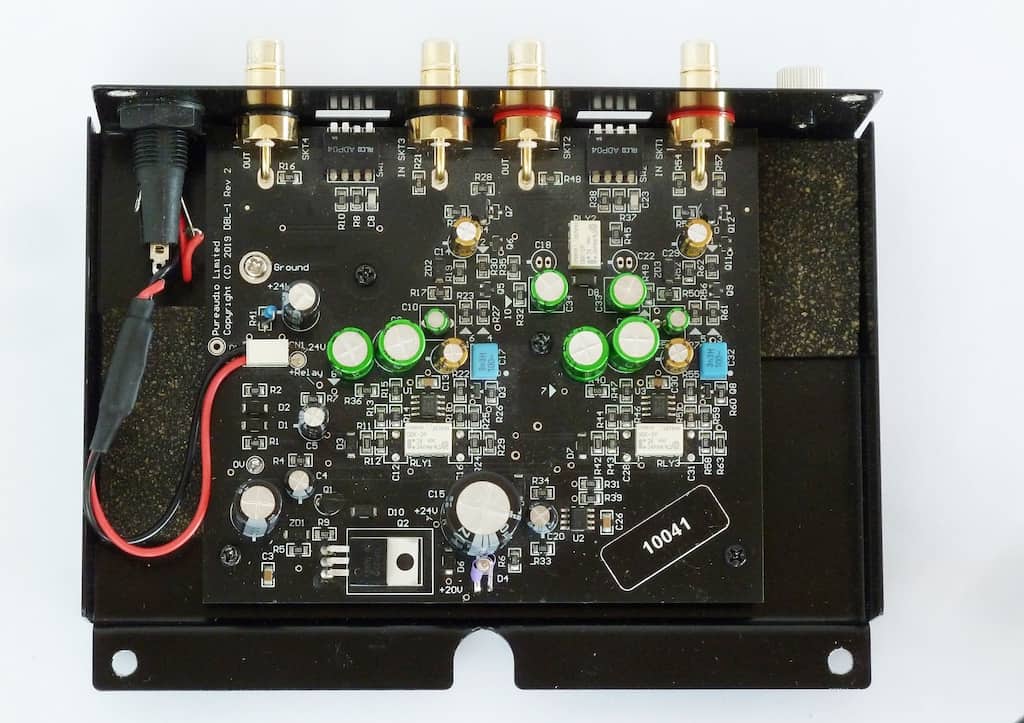 I felt that The Wand EQ phonostage really complimented the Wand Tonearm and Turntable. (Something I’m sure the Wand team will be pleased to hear.) Everything I already liked about the Wand combination was – not improved as such – but perhaps bolstered by the EQ. It set a firm stage on which the preceding links in the chain can perform. Certain things perhaps were slightly accentuated but the EQ let the arm, turntable and cartridge shine through without adding colour or restraint. And to be honest, the same was true when using my Lenco turntable and Apparition tonearm. I don’t see there being any compatibility issues with whatever turntable combination you have.
I felt that The Wand EQ phonostage really complimented the Wand Tonearm and Turntable. (Something I’m sure the Wand team will be pleased to hear.) Everything I already liked about the Wand combination was – not improved as such – but perhaps bolstered by the EQ. It set a firm stage on which the preceding links in the chain can perform. Certain things perhaps were slightly accentuated but the EQ let the arm, turntable and cartridge shine through without adding colour or restraint. And to be honest, the same was true when using my Lenco turntable and Apparition tonearm. I don’t see there being any compatibility issues with whatever turntable combination you have.
Comparing all three phonostages and using the A23 SUT into their respective MM stages (set to 47k), the EAR again had better soundstage width and that sense of being enveloped with sound. The EQ wasn’t far off in this sense but as usual also sounded more natural, more detailed and better capable of realising micro dynamics. The A23 has a natural ability to emphasise the phonostage, while adding more presence and expanse.
The two older phonostages still stand up admirably to the test of time and I love them both. Conversely, the EQ has something of a modern touch and I expect it too to be well regarded in decades to come.
Try as I might, I cannot think of anything I don’t like about the Wand EQ. I think I would feel the same even if it cost quite a few hundred more. It has the right amount of user adjustments, it looks sharp without taking up too much room and of course, it is extremely capable in the sound department. I love how there’s a certain ease with which it handles all music – not to say that it’s laid back because it isn’t, rather it simply relays what’s coming off the needle without fuss or added tension.
There are of course other options out there if you want even more detail, even better resolution, et cetera but the EQ does everything so well at a relatively sane price that it’s well worth putting on your shortlist, whatever your budget.

